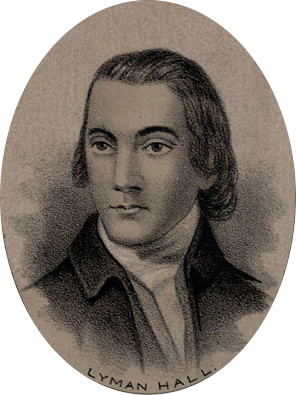|
William C. Hurst
Dr. William Calhoun Hurst is an Extension Specialist and Professor of Food Science and Technology in the College of Agricultural and Environmental Sciences at the University of Georgia. He is credited with developing the first national Good Agricultural Practices (GAPs) short course specifically designed for the fresh produce industry, and was the impetus for developing the Georgia Food Safety Certification Program with the Georgia Department of Agriculture and other entities. His development of the first Hazard Analysis Critical Control Points ( HACCP) short course for the fresh produce industry is recognized internationally, and his development of Georgia's GAPs Food Safety Program is regarded as a model for other states in the country that are working to establish similar programs. In 2001, the Southeastern Food Processors Association established a scholarship at the University of Georgia in Hurst's name. He is also the 2004 recipient of the D.W. Brooks David William Brook ... [...More Info...] [...Related Items...] OR: [Wikipedia] [Google] [Baidu] |
Food Science
Food science is the basic science and applied science of food; its scope starts at overlap with agricultural science and nutritional science and leads through the scientific aspects of food safety and food processing, informing the development of food technology. Food science brings together multiple scientific disciplines. It incorporates concepts from fields such as chemistry, physics, physiology, microbiology, and biochemistry. Food technology incorporates concepts from chemical engineering, for example. Activities of food scientists include the development of new food products, design of processes to produce these foods, choice of packaging materials, shelf-life studies, sensory evaluation of products using survey panels or potential consumers, as well as microbiological and chemical testing. Food scientists may study more fundamental phenomena that are directly linked to the production of food products and its properties. Definition The Institute of Food Technol ... [...More Info...] [...Related Items...] OR: [Wikipedia] [Google] [Baidu] |
University Of Georgia College Of Agricultural And Environmental Sciences
The College of Agricultural and Environmental Sciences (CAES) is the agricultural college of the University of Georgia, a public research university in Athens, Georgia. History Originally the state agricultural college, CAES was founded in 1859 by the University Board of Trustees as part of a complete reorganization of the university. It was the first college at the University of Georgia to accept women, beginning in 1918. There are three main campuses—Athens, Tifton, and Griffin. All three campuses are home to various research stations and extension programs. The main Athens campus buildings are Conner Hall, the Edgar Rhodes Center for Animal and Dairy Sciences and the Four Towers Building. Off-campus sites include barns on South Milledge Avenue, the UGA Teaching Dairy, Double Bridges Farm, the UGA Livestock Teaching Arena, and the Wilkins Beef Unit. Additional research centers are located in Attapulgus, Eatonton, Camilla, Savannah, Blairsville, Calhoun, and Plains. Georgia ... [...More Info...] [...Related Items...] OR: [Wikipedia] [Google] [Baidu] |
University Of Georgia
, mottoeng = "To teach, to serve, and to inquire into the nature of things.""To serve" was later added to the motto without changing the seal; the Latin motto directly translates as "To teach and to inquire into the nature of things." , established = , endowment = $1.8 billion (2021)As of June 30, 2021. , type = Public flagship land-grant research university , parent = University System of Georgia , accreditation = SACS , academic_affiliation = , president = Jere W. Morehead , provost = S. Jack Hu , city = Athens , state=Georgia , country = United States , coordinates = , faculty = 3,119 , students = 40,118 (fall 2021) , undergrad = 30,166 (fall 2021) , postgrad = 9,952 (fall 2021) , free_label2 = Newspaper , free2 = '' The Red & Black'' , campus = Midsize city / College town , campus_size = (main campus) (total) , colors = , sports_nickname = Bulldogs , sporting_affiliations = NCAA Division I FBS – SEC , mascot = Uga X (live English Bulldo ... [...More Info...] [...Related Items...] OR: [Wikipedia] [Google] [Baidu] |
Good Agricultural Practices
Good agricultural practice (GAP) is a certification system for agriculture, specifying procedures (and attendant documentation) that must be implemented to create food for consumers or further processing that is safe and wholesome, using sustainable methods. While there are numerous competing definitions of what methods constitute good agricultural practice, there are several broadly accepted schemes that producers can adhere too. Motivation Introduction of GAP is particularly desirable when there is chronic overuse and misuse of agricultural pesticides. Governments seek to reduce the use of pesticides by promoting alternative methods of pest management, while at the same time ensuring a steady production of safe and wholesome food. Organizations Food and Agricultural Organization (FAO) of the United Nations GAP The Food and Agricultural Organization of the United Nations (FAO) uses good agricultural practice as a collection of principles applying to on-farm production and po ... [...More Info...] [...Related Items...] OR: [Wikipedia] [Google] [Baidu] |
Food Safety
Food safety (or food hygiene) is used as a scientific method/discipline describing handling, preparation, and storage of food in ways that prevent food-borne illness. The occurrence of two or more cases of a similar illness resulting from the ingestion of a common food is known as a food-borne disease outbreak. This includes a number of routines that should be followed to avoid potential health hazards. In this way, food safety often overlaps with food defense to prevent harm to consumers. The tracks within this line of thought are safety between industry and the market and then between the market and the consumer. In considering industry to market practices, food safety considerations include the origins of food including the practices relating to food labeling, food hygiene, food additives and pesticide residues, as well as policies on biotechnology and food and guidelines for the management of governmental import and export inspection and certification systems for foods ... [...More Info...] [...Related Items...] OR: [Wikipedia] [Google] [Baidu] |
Hazard Analysis And Critical Control Points
Hazard analysis and critical control points, or HACCP (), is a systematic preventive approach to food safety from biological, chemical, and physical hazards in production processes that can cause the finished product to be unsafe and designs measures to reduce these risks to a safe level. In this manner, HACCP attempts to avoid hazards rather than attempting to inspect finished products for the effects of those hazards. The HACCP system can be used at all stages of a food chain, from food production and preparation processes including packaging, distribution, etc. The Food and Drug Administration (FDA) and the United States Department of Agriculture (USDA) require mandatory HACCP programs for juice and meat as an effective approach to food safety and protecting public health. Meat HACCP systems are regulated by the USDA, while seafood and juice are regulated by the FDA. All other food companies in the United States that are required to register with the FDA under the Public Health ... [...More Info...] [...Related Items...] OR: [Wikipedia] [Google] [Baidu] |
HACCP
Hazard analysis and critical control points, or HACCP (), is a systematic preventive approach to food safety from biological, chemical, and physical hazards in production processes that can cause the finished product to be unsafe and designs measures to reduce these risks to a safe level. In this manner, HACCP attempts to avoid hazards rather than attempting to inspect finished products for the effects of those hazards. The HACCP system can be used at all stages of a food chain, from food production and preparation processes including packaging, distribution, etc. The Food and Drug Administration (FDA) and the United States Department of Agriculture (USDA) require mandatory HACCP programs for juice and meat as an effective approach to food safety and protecting public health. Meat HACCP systems are regulated by the USDA, while seafood and juice are regulated by the FDA. All other food companies in the United States that are required to register with the FDA under the Public Health ... [...More Info...] [...Related Items...] OR: [Wikipedia] [Google] [Baidu] |
Year Of Birth Missing (living People)
A year or annus is the orbital period of a planetary body, for example, the Earth, moving in its orbit around the Sun. Due to the Earth's axial tilt, the course of a year sees the passing of the seasons, marked by change in weather, the hours of daylight, and, consequently, vegetation and soil fertility. In temperate and subpolar regions around the planet, four seasons are generally recognized: spring, summer, autumn and winter. In tropical and subtropical regions, several geographical sectors do not present defined seasons; but in the seasonal tropics, the annual wet and dry seasons are recognized and tracked. A calendar year is an approximation of the number of days of the Earth's orbital period, as counted in a given calendar. The Gregorian calendar, or modern calendar, presents its calendar year to be either a common year of 365 days or a leap year of 366 days, as do the Julian calendars. For the Gregorian calendar, the average length of the calendar year (the ... [...More Info...] [...Related Items...] OR: [Wikipedia] [Google] [Baidu] |
Living People
Related categories * :Year of birth missing (living people) / :Year of birth unknown * :Date of birth missing (living people) / :Date of birth unknown * :Place of birth missing (living people) / :Place of birth unknown * :Year of death missing / :Year of death unknown * :Date of death missing / :Date of death unknown * :Place of death missing / :Place of death unknown * :Missing middle or first names See also * :Dead people * :Template:L, which generates this category or death years, and birth year and sort keys. : {{DEFAULTSORT:Living people 21st-century people People by status ... [...More Info...] [...Related Items...] OR: [Wikipedia] [Google] [Baidu] |
University Of Georgia Faculty
A university () is an educational institution, institution of higher education, higher (or Tertiary education, tertiary) education and research which awards academic degrees in several Discipline (academia), academic disciplines. Universities typically offer both undergraduate education, undergraduate and postgraduate education, postgraduate programs. In the United States, the designation is reserved for colleges that have a graduate school. The word ''university'' is derived from the Latin ''universitas magistrorum et scholarium'', which roughly means "community of teachers and scholars". The first universities were created in Europe by Catholic Church monks. The University of Bologna (''Università di Bologna''), founded in 1088, is the first university in the sense of: *Being a high degree-awarding institute. *Having independence from the ecclesiastic schools, although conducted by both clergy and non-clergy. *Using the word ''universitas'' (which was coined at its foundation ... [...More Info...] [...Related Items...] OR: [Wikipedia] [Google] [Baidu] |


.jpg)
